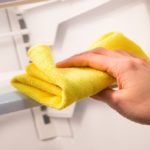## Cancer Risks Hiding in Your Home and Office: Everyday Items That May Increase Your Risk
Cancer is an insidious disease that can arise from a multitude of factors, including genetics, lifestyle, diet, and environmental influences. Surprisingly, even familiar objects in your home or office can potentially contribute to this health threat. Many people are unaware that everyday items may pose a hidden danger, increasing the risk of cancer.
Ultrafine particles from printers – A health hazard in disguise
In office settings, printers are essential equipment, and they are also gaining popularity in households for work and educational purposes. However, laser printers can release carbon particles during the printing process, which poses a health risk.
These particles are minuscule, ranging from 10 to 100 nanometers in size, allowing them to easily become airborne and infiltrate the respiratory system. Inhaling these carbon particles can irritate the respiratory tract and increase the likelihood of developing chronic lung and cardiovascular diseases. Once lodged in the lungs, the body cannot easily expel these particles, leading to long-term accumulation, inflammation, and lung damage. Prolonged exposure to high concentrations increases the risk of lung cancer.
To minimize the risk associated with carbon particles from printers, it is advisable to place printers in well-ventilated areas, preferably near open spaces or windows. Avoid sitting close to the printer while it is operating. Regular cleaning and maintenance of the device are also crucial. Organizations and households should opt for environmentally friendly printers with low dust emissions to reduce health hazards.

Reduce your exposure to carbon particles from printers by ensuring they are placed in well-ventilated areas.
Kitchen appliances: Air fryers and ovens
Air fryers and electric ovens are becoming increasingly popular due to their ability to cook food without using oil, which is beneficial for cardiovascular health. However, using these appliances also carries health risks, particularly for the respiratory system.
When operated at high temperatures, especially above 200°C, air fryers and ovens can generate ultrafine particles known as PM2.5. These particles are among the most harmful air pollutants as they can penetrate deep into the lungs, causing inflammation and irritation to the respiratory system.
PM2.5 particles can persist in the lungs and accumulate over time, creating a conducive environment for cancerous cell growth. Numerous studies have linked continuous exposure to PM2.5 with an increased risk of chronic respiratory diseases, cardiovascular issues, and lung cancer.
To mitigate the risks associated with air fryers and ovens, it is recommended to place them in well-ventilated areas, preferably near windows or with adequate exhaust systems. Investing in a kitchen air purifier is also an effective way to eliminate PM2.5 particles from the air. Additionally, avoid using these appliances at extremely high temperatures or for extended periods to reduce the formation of toxic gases during cooking.

Position air fryers and ovens in well-ventilated spaces, preferably near windows.
Chemical cleaning products
Chemical cleaning products are commonplace in many households due to their effective cleaning abilities. However, many of these products contain harmful ingredients such as ammonia, formaldehyde, and volatile organic compounds (VOCs). When used, these chemicals can vaporize, dispersing into the air and easily entering the respiratory system through inhalation.
Prolonged exposure to the compounds found in cleaning products can significantly damage the lungs and respiratory system. Ammonia and formaldehyde can irritate the lung mucosa, leading to symptoms like coughing, breathlessness, and impaired lung function. Individuals who work in environments with frequent exposure to these chemicals, such as professional cleaners or those who clean without proper protection, face an elevated risk of chronic lung diseases and lung cancer.
To reduce the negative impact of chemical cleaning products, consumers should opt for natural, non-toxic alternatives. When using chemical cleaning agents, ensure adequate ventilation by opening windows or using exhaust fans. Additionally, wearing masks and gloves can effectively protect the respiratory system. Reducing the use of strong chemical cleaning agents, especially in enclosed spaces like bathrooms and kitchens, will help safeguard your health and that of your family.














